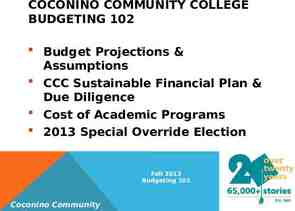School-Based Health Services: Speech and Language Therapy
43 Slides355.18 KB
School-Based Health Services: Speech and Language Therapy Brenda Addington, MA, CCC-SLP Jessamine County Schools August 29, 2013
Session Objectives: 1. Overview of the areas of communication served in the public school setting 2. How SLPs should provide documentation of need for speech and language services 3. Major ICD 9 codes for various services provided 4. Example of paper-based Medicaid coding sheet 5. Billing Issues and Suggestions 6. Q & A
Areas of Communication Served in Public Schools Articulation Oral Language Voice Fluency
Articulation Disorders Also referred to by KDE as a disorder of Speech Sound Production The service that most people are familiar with Etiologies: structural or functional abnormalities in the brain, cranial/facial nerves or oral structures, apraxia of speech, developmental delay, mental disability
Treatment of Speech Sound Disorders Replacing the errored pattern with the correct pattern Teaching student to compensate or approximate if improvement is not possible Providing an alternative means of communication if the disorder is so severe that speech is not possible
Oral Language The ability to understand what people say (Receptive) AND The ability to express your thoughts and ideas to others in a coherent fashion (Expressive) Disorders in Language are complex and can be due to brain malformations, developmental delays or environmental factors
Language Disorders Some etiologies of language disorders include: Stroke Malformations of the brain in utero Genetic disorders Physical abuse Mental abuse and neglect Traumatic Brain Injury Autism
Areas of Treatment Form: Grammar Usage, Sentence Formulation Content: Vocabulary, Comprehension, Sequencing Use: Conversational Prerequisite Skills Can also involve teaching the child to communicate through alternative communication systems, such as sign language, computer assisted communication, or communication boards
Voice Disorders Difficulties with voice are not diagnosed as often by SLPs in schools Requires a medical clearance from an ENT prior to treatment Common etiologies/causes seen in school-aged children: vocal nodules, swelling of the vocal cords, reflux, persistent colds/allergies, abnormally swollen tonsils Some respond to speech therapy and some do not
Voice Areas of Concern Pitch: too high, too low for age and gender Resonance: nasal or de-nasal Loudness: too loud or too soft Respiration: breath support needed to produce voice Quality: hoarse, breathy, loss of voice
Voice Treatment Involves using the ENT recommendations to design a program to correct loudness, pitch, quality, respiration, or phonation (sound quality) For most students it involves retraining the student to refrain from behaviors that contribute to hoarseness or breathiness
Fluency Also known as “Stuttering” or “Dysfluency” Involves excessive repetitions, hesitations, prolongations or blockage of speech which make it difficult for the person to communicate or make messages distracting to listeners Etiology/Cause is usually unknown Some etiologies are connected to brain function (although difficult to prove)
Correction of Fluency Disorders Involves practicing breathing patterns and establishing appropriate speaking habits such as: Slower speech rate Thinking about what you want to say before you speak Saying the utterance again if you stutter Facing situations and fears related to speaking Practicing words that give you trouble
Treatment of Fluency Involves training adults who work with children who are dysfluent to model speaking behaviors that promote fluency and relieve the child of their speaking anxieties, and include: Using slow speaking patterns Waiting for an answer Not pressuring the child to communicate Not punishing the child for stuttering
Who Can Bill for Medicaid Services Only Speech-Language Pathologists who have obtained ASHA certification (CCC-SLP) are allowed to bill for speech-language therapy services provided in schools CCCs not required in order to work in school systems SLPs pay 225 per year to ASHA to maintain certification plus the cost for 30 hours of CEUs every three years Ethical Practice: employers need to maintain the CCCSLP designation if billing is a job requirement
Which Speech Services Can Be Billed? Billable services must be stated in the IEP: Individual and Group Speech & Language Therapy sessions are billable Evaluation of students as stated by due process timelines and state guidelines
Which Services Are Not Billable? Screenings are universal and therefore not billable Meetings and consultations with parents or child’s teachers may not be billed as a direct service Conferences, meetings and indirect services are accounted for in the Random Moment Sampling portion of Medicaid billing
Documentation of Need for Services Federal law mandates that speech-language therapy services are medically needed services and therefore are billable in public schools The SLP should make a definitive diagnostic statement that includes the underlying etiology, if present, to document the medical necessity for services AND A statement of how the diagnosis negatively affects educational performance to assist in justifying the need for services
Documenting Need for Speech-Language Services Several pieces of the due process paperwork for speech and language therapy should document the necessity of speech-language services: The Evaluation or Communication Written Report The Eligibility Form (primary S/L services only) The IEP If need be, the conference summary from the ARC annual review meeting
Communication Written Report Two areas need to be addressed by the SLP when developing the communication written report: Diagnostic Statement: Statement of the SLP’s clinical impression/diagnosis and underlying etiology/cause for the problem Impact Statement: How the diagnosis negatively impacts educational performance
Sample Diagnostic Statements-Speech John exhibits a disorder of speech sound production secondary to poor functioning of the oral mechanism. John exhibits a disorder of speech sound production secondary to limited tongue mobility needed for producing the /r/ and /l/ sounds. John exhibits a disorder of speech sound production secondary to developmental apraxia of speech.
Sample Diagnostic Statements-Language John exhibits a mixed expressive/receptive disorder of language secondary to developmental delay. John exhibits a mild expressive disorder of language secondary to autism. John exhibits a severe disorder of language secondary to functional mental disability John exhibits a mixed expressive/receptive disorder of language due to unknown etiology.
Sample Diagnostic Statements-Voice/Fluency John exhibits a mild disorder of voice due to a diagnosis of vocal nodules by his ENT. John exhibits a moderate disorder of voice secondary to persistent swelling and edema in the vocal folds as diagnosed by an ENT. John exhibits a disorder of fluency due to unknown etiology, and is characterized by prolongations, sound repetitions and part-word repetitions.
Communication Written Report At the conclusion of the report, the SLP should always provide a statement of need for speech-language therapy services and how the disability negatively impacts educational performance. It is commonly referred to as an “Impact Statement” and will also be seen on the Present levels of performance in the communication area on the IEP
Evaluation Documentation Sample According to Kentucky Eligibility Guidelines-Revised, John is eligible for speech therapy services to address articulation/speech sound production in the school setting. Difficulties with articulation negatively impact John’s ability to speak appropriately and be understood by others across all settings.
Evaluation Impact Statement According to Kentucky Eligibility Guidelines-Revised, John is eligible to receive therapy services for a mixed expressive/receptive language disorder in the school setting, as difficulties with language negatively impact John’s ability to participate in classroom discussions, complete classroom assignments and participate in conversation exchanges.
Eligibility Documentation In the speech/language eligibility form, cut and paste the narrative evaluation information in the supporting evidence section of the paperwork. This should include both the diagnostic statement and impact statement to document appropriately for Medicaid
IEP Documentation of Diagnosis/Impact In the present levels of performance, the SLP should include the communication diagnosis and underlying etiology, if known At the conclusion of the communication area in the present levels of performance, there should always be an impact statement that clearly states how the disorder impacts the ability to access the students’ current level of programming.
Present Levels of Performance Statement John’s communication strengths are in the areas of voice, fluency and speech sound production. John exhibits difficulties with expressive and receptive language secondary to a diagnosis of learning disability. He is able to define words with 80% accuracy, answer questions with 50% accuracy and formulate sentences with 75% accuracy. He continues to have difficulty with comprehension and sentence formulation skills.
Present Levels Impact Statement Difficulties with expressive and receptive language negatively impact John’s ability to comprehend information presented orally, communicate his ideas to others and participate in classroom activities.
ICD-9 Procedural Codes Used for Speech/Language Disorders Look up codes at this website: http://www.cms.gov/medicare-coverage-database/ staticpages/icd-9-code-lookup.aspx Type the disorder being served List pops up with relevant codes
ICD-9 Codes for Speech 315.39 Other Developmental Speech Disorder 315.34 Speech and Language Developmental Delay due to Hearing Loss
ICD-9 Codes for Language 315.31 Expressive Language Disorder 315.32 Mixed Expressive-Receptive Language Disorder
ICD-9 Codes for Voice 784.40 Voice and Resonance Disorder, Unspecified 784.49 Other Voice and Resonance Disorders
ICD-9 Code for Stuttering/Dysfluency 315.35 Childhood Onset Fluency Disorder
Medicaid Coding Students can only be billed for the amount of time listed in the IEP Billing is completed in 15 minute increments of time If a student is seen for less than 7.5 minutes in a 15 minute period, then the session is not billable Most students who are seen using “fast speech” or “five minute” kid approaches are not billable, unless the session is longer than 7.5 minutes
Medicaid Coding Each district has its own billing system, whether on-line or paper-based Refer to the sample at the end of this handout for handwritten sample of speech-language coding The following information should be collected for each session:
Information to Collect Student’s Medicaid ID number Modifier (clinician’s provider number) Procedural Code (ICD-9) Date & Times seen (start & end of session) Number of Units (15 minutes is a unit, 7.5 minutes or longer counts as a unit) Number of students in the group (6 or less for billing) If the session was group, individual or evaluation
More Information Description of the treatment session (activity) The objectives targeted during the session The student’s response to the treatment (data/anecdotal) The clinician’s initials to verify the session (if billing on paper)
Billing Suggestions for the SLPs Due to large caseloads, it is best to bill only those students who are eligible for Medicaid using the Medicaid documentation If doing on-line billing, ensure the clinician has access to up-to-date computer equipment needed for billing If you are requiring clinicians to bill, reimburse for using credentials Ensure the SLP makes time in their schedule for billing
Review Document need for services clearly in the evaluation, IEP & eligibility statements Ensure both a diagnostic statement with underlying etiology & the impact on educational performance are present in each evaluation Determine that clinicians are not billing for anything above and beyond IEP minutes Ensure SLPs are certified by ASHA before billing for Medicaid
Q&A Resources: School Based Health Services Manual Website: http://education.ky.gov/specialed/Pages/School-BasedMedicaid-Services.aspx
















































